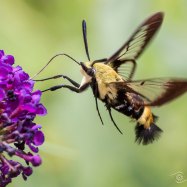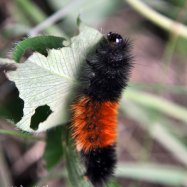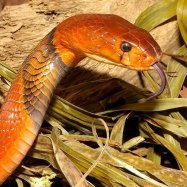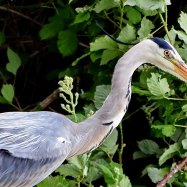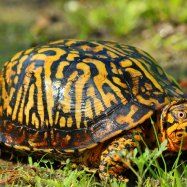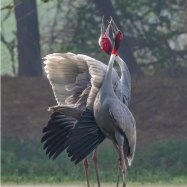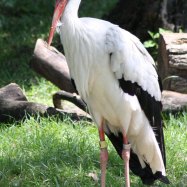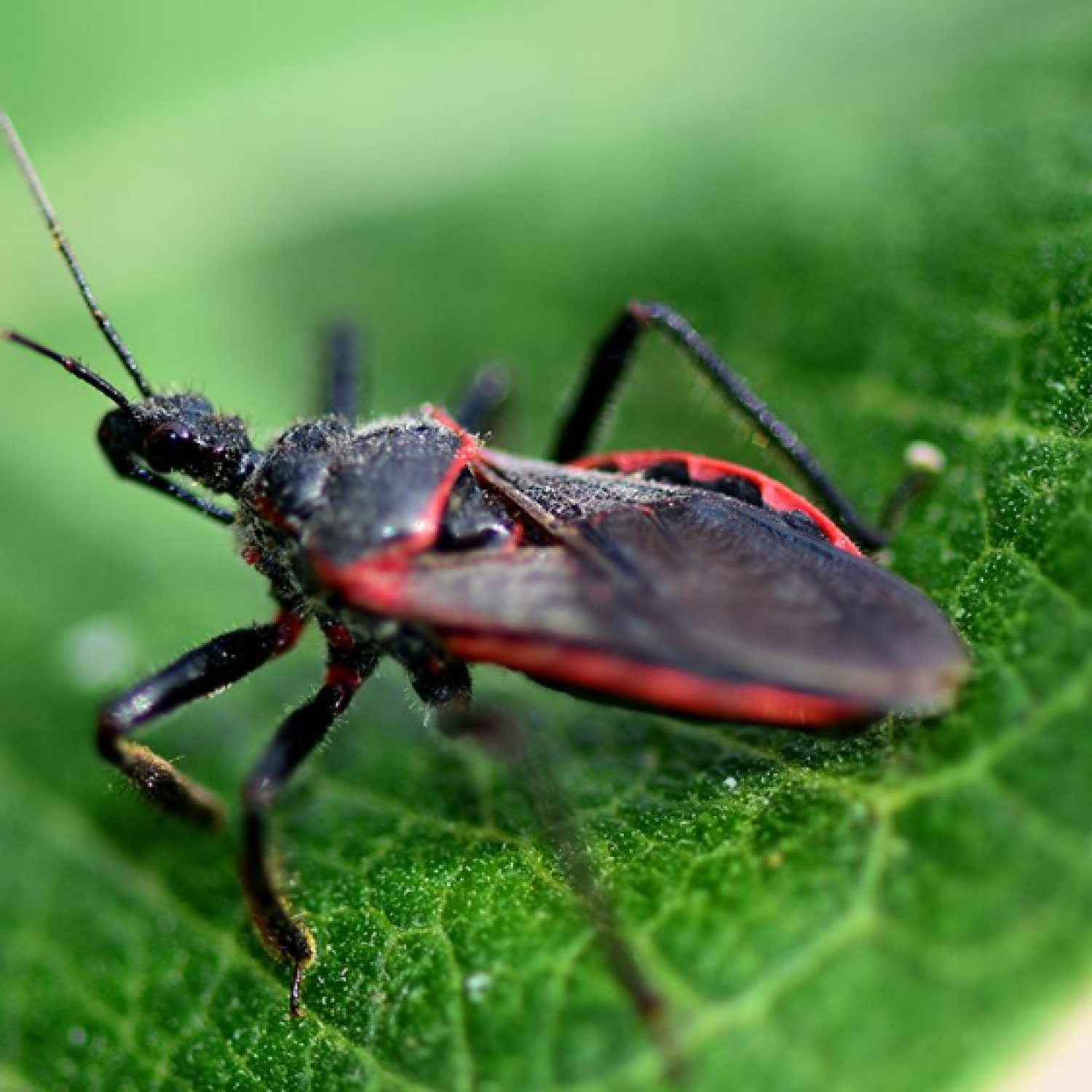
Kissing Bugs
About 0.2 to 1 inch (5 to 25 mm)
Kissing bugs, also known as assassin bugs, are found throughout the Americas. These blood-sucking insects can range in size from 0.2 to 1 inch and have an oval-shaped body with a narrow head and long mouthparts. They belong to the Reduviidae family and can pose a threat to humans by transmitting a dangerous parasite. So beware of these little critters and take necessary precautions to avoid their bites. Stay safe and informed! #KissingBugs #AssassinBugs #Reduviidae #Insects #Americas
Animal Details Summary:
Common Name: Kissing Bugs
Kingdom: Animalia
Habitat: Various habitats including forests, deserts, and urban areas
The Dangerous Yet Fascinating Kissing Bugs
Deep in the forests, deserts, and even in our very own homes, these little insects lurk around, waiting for their next meal. They are known for their deceptive name – Kissing Bugs – but don't let it fool you. These seemingly harmless critters are far from being affectionate. In fact, they can be quite dangerous Kissing Bugs. Let's find out more about these fascinating creatures and why they should be taken seriously.The Scientific Name and Common Name
Let's start with the basics. The scientific name for kissing bugs is Triatominae. This name comes from the Greek words tria, meaning "three," and tomos, meaning "segment," referring to the insect's three-segmented beak. The common name, on the other hand, is quite misleading. Kissing bugs are not cute little insects that kiss you goodnight. They are, in fact, dangerous blood-sucking insects.The Taxonomy of Kissing Bugs
Kissing bugs belong to the kingdom Animalia, which means they are animals with multicellular bodies and capable of movement. They are also part of the phylum Arthropoda, which includes animals with segmented bodies, jointed legs, and a hard external skeleton Kingfisher. Kissing bugs belong to the class Insecta, which comprises animals with a segmented body, three pairs of legs, and a pair of antennae.The order Hemiptera, to which kissing bugs belong, is characterized by insects with piercing and sucking mouthparts. Lastly, kissing bugs are part of the family Reduviidae, which includes about 7,000 species of insects known as assassin bugs. The name "assassin" comes from their predatory nature, as they often hide and wait for their prey to come close before attacking.
Habitat and Distribution
Kissing bugs are found in various habitats, including forests, deserts, and urban areas. They often hide in cracks and crevices, such as in the walls of houses, buildings, and animal shelters. These insects are widely distributed, primarily in the Americas, from the southern United States to Argentina. However, kissing bugs have also been reported in Europe, Africa, and Australia, likely brought by travelers or migrants from the Americas.Feeding Behavior
Kissing bugs are hematophagous, which means they feed on blood. The primary source of their food is mammals, including humans, as well as birds, reptiles, and even other insects. These insects are nocturnal, meaning they are most active at night. They use their elongated mouthparts to pierce the skin of their victims and then suck the blood through it. Unlike other blood-sucking insects, such as mosquitoes, kissing bugs can feed for a long time, up to 30 minutes, and may even take multiple blood meals in one feeding session.Dangerous Infectious Diseases
Now, here comes the dangerous part. Kissing bugs are not merely annoying blood-suckers, but they can also transmit harmful diseases. The most well-known disease associated with kissing bugs is Chagas disease, also known as American trypanosomiasis. It is caused by the parasite Trypanosoma cruzi, which is carried by kissing bugs. When the insect bites, it can leave the parasite in its feces on the victim's skin, which can enter the body through the bite wound or mucous membranes.One of the most concerning issues with Chagas disease is its silent and chronic nature. Many people who are infected may not show any symptoms for years or even decades, making it challenging to diagnose and treat. In the chronic phase, Chagas disease can cause severe and potentially fatal complications, such as heart problems and digestive issues.
In addition to Chagas disease, kissing bugs can also transmit other infectious diseases, such as Bartonellosis, caused by Bartonella bacteria, and Leishmaniasis, caused by Leishmania parasites.
Identification and Physical Characteristics
Kissing bugs can vary in appearance, with different species having different colorations, patterns, and sizes. However, they do share some common physical characteristics that can help in their identification. Kissing bugs have oval-shaped bodies with a narrow head and elongated mouthparts, which are used for feeding. Their bodies are usually brown to black, with some species having vibrant patterns, such as stripes or spots.On average, kissing bugs can range from 0.2 to 1 inch (5 to 25 mm) in length, depending on the species. They also have six legs, two antennae, and large compound eyes, as typical of most insects. However, their wings are relatively small and do not enable them to fly for long distances. Instead, they can glide short distances by using their wings and legs.
Preventive Measures
Now that we know how dangerous kissing bugs can be, it's essential to learn how to prevent them from entering our homes and protect ourselves from their bites. Here are some simple yet effective measures you can take:- Seal any cracks or crevices in your home's walls, doors, and windows to prevent kissing bugs from entering.
- Remove any debris, woodpiles, or rocks from around your home, as they can serve as hiding spots for kissing bugs.
- Keep your outdoor lights off as much as possible, as they can attract these insects.
- If you live in an area with a known kissing bug population, consider using insect screens on your doors and windows.
- Inspect your home for any potential entry points for kissing bugs, such as gaps in walls, pipes, or cables, and seal them.
In Conclusion
Kissing bugs may seem like small and insignificant insects, but they can pose a significant threat to our health and well-being. It's crucial to be aware of their presence and take preventive measures to avoid their bites. If you suspect that you have seen kissing bugs or have been bitten by one, it's essential to seek medical attention immediately. With proper knowledge and precaution, we can keep ourselves and our loved ones safe from these dangerous yet fascinating insects.

Kissing Bugs
Animal Details Kissing Bugs - Scientific Name: Triatominae
- Category: Animals K
- Scientific Name: Triatominae
- Common Name: Kissing Bugs
- Kingdom: Animalia
- Phylum: Arthropoda
- Class: Insecta
- Order: Hemiptera
- Family: Reduviidae
- Habitat: Various habitats including forests, deserts, and urban areas
- Feeding Method: Hematophagous (feeds on blood)
- Geographical Distribution: Found primarily in the Americas, from the southern United States to Argentina
- Country of Origin: Various countries in the Americas
- Location: Throughout the Americas
- Animal Coloration: Varies, ranging from brown to black, with some species having vibrant patterns
- Body Shape: Oval-shaped body with a narrow head and elongated mouthparts
- Length: About 0.2 to 1 inch (5 to 25 mm)
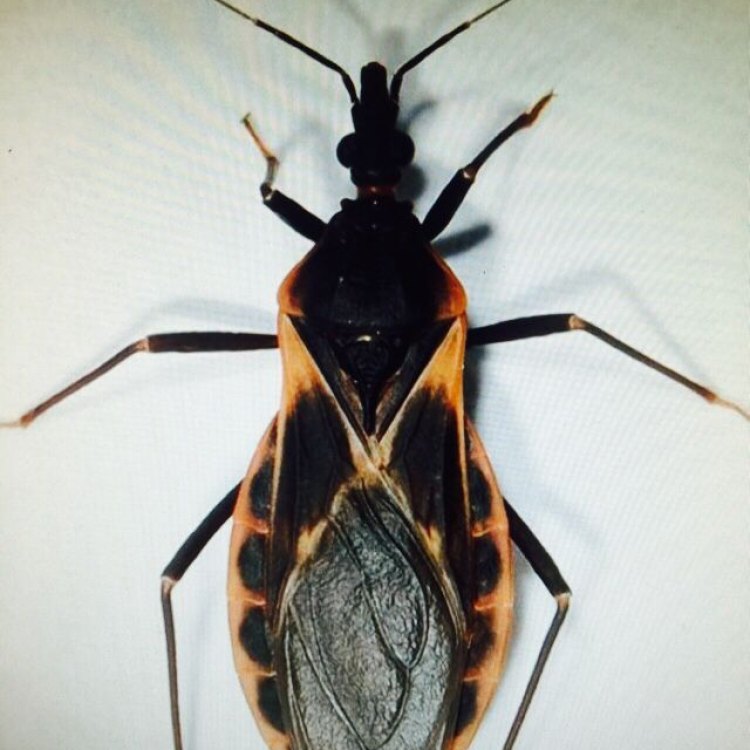
Kissing Bugs
- Adult Size: About 0.2 to 1 inch (5 to 25 mm)
- Average Lifespan: About 1 to 2 years
- Reproduction: Sexual reproduction
- Reproductive Behavior: Mating occurs through a series of specific signaling behaviors
- Sound or Call: No specific sound or call
- Migration Pattern: Non-migratory, but may disperse locally in search of food
- Social Groups: Mostly solitary, except during mating
- Behavior: Nocturnal and attracted to the carbon dioxide exhaled by humans and other animals
- Threats: Vector for Chagas disease, a potentially serious parasitic infection
- Conservation Status: No specific conservation status, some species may be considered a nuisance
- Impact on Ecosystem: Important in the transmission of Chagas disease, which can affect humans and animals
- Human Use: None
- Distinctive Features: Long, tubular mouthparts and segmented abdomen
- Interesting Facts: Some species of kissing bugs can transmit the parasite Trypanosoma cruzi, which causes Chagas disease
- Predator: Various predators, including birds, reptiles, and mammals
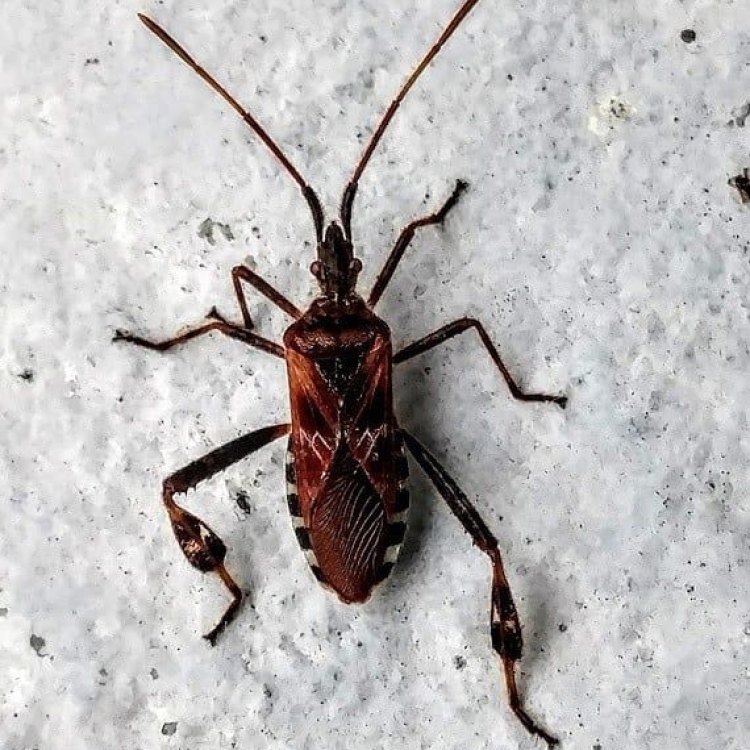
Triatominae
The Intriguing World of Kissing Bugs: From Deadly Disease Carriers to Fascinating Insects
When you hear the term "kissing bugs," you may envision cute little insects that give affectionate pecks on the cheek. However, the reality is far from romantic. These bugs, also known as triatomine bugs, are actually dangerous vectors for a potentially life-threatening disease. But beyond their role as disease carriers, there is a world of wonder and fascination surrounding these creatures PeaceOfAnimals.Com. From their unique physical features to their reproductive behavior, we will delve into the intriguing world of kissing bugs.What are Kissing Bugs?
Kissing bugs are a group of insects belonging to the Triatominae subfamily, which is a subset of the larger Reduviidae family. They are commonly found in the Americas, with the majority of species inhabiting Central and South America. These bugs have also been reported in some parts of the southern United States, including Texas, Arizona, and New Mexico.
In terms of appearance, kissing bugs are not your typical insect. They are relatively large, measuring between 0.2 to 1 inch (5 to 25 mm) in length. Their bodies are segmented, with a distinct head, thorax, and abdomen. They also have unique elongated and tubular mouthparts, which are used to pierce the skin of their prey Keelback.
The Life of a Kissing Bug
The average lifespan of a kissing bug is about 1 to 2 years. They undergo sexual reproduction, with the female laying eggs after mating. These eggs then hatch into nymphs, which go through several molting stages before reaching adulthood.
Interestingly, mating among kissing bugs is not a simple affair. It occurs through a series of specific signaling behaviors, which involve the release of pheromones and physical interactions between males and females. These behaviors are essential for successful reproduction and are unique to each species of kissing bug.
Flying solo or living in a pack?
Kissing bugs are mostly solitary insects, with individuals spending the majority of their time alone. However, during the mating season, they may come together in small groups. In some cases, these groups may include multiple males and females, which engage in courtship rituals and reproduction together.
Behavior and Attraction to Humans
Kissing bugs are nocturnal creatures, meaning they are most active at night. They are also attracted to the carbon dioxide exhaled by humans and other animals, making them a common household pest. This is because they are obligate hematophages, which means they feed on the blood of vertebrates to survive.
When it comes to their behavior around humans, kissing bugs are usually not aggressive. They tend to hide in cracks and crevices during the day and come out at night to feed. However, they can bite humans if they feel threatened or disturbed, causing pain and swelling at the site of the bite.
The Deadly Threat of Chagas Disease
While kissing bugs may seem like a mere nuisance, they pose a serious threat as carriers of Chagas disease, a potentially fatal parasitic infection. The parasite responsible for this disease, Trypanosoma cruzi, is transmitted through the feces of the kissing bug.
When a kissing bug bites a person, it excretes its feces near the bite wound. The parasite then enters the body through the bite wound or through mucous membranes, such as the eyes or mouth. If left untreated, Chagas disease can cause serious health complications, including heart and digestive problems.
Kissing Bugs and Conservation Status
Unlike other insects, kissing bugs do not have a specific conservation status. However, some species may be considered a nuisance due to their biting behavior and potential to transmit disease. There is also a concern for the impact of human activities on their habitats, as deforestation and urbanization can disrupt their natural habitats.
Importance in Ecosystems
Despite their small size, kissing bugs play a crucial role in the transmission of Chagas disease, which can affect humans, domestic animals, and wildlife. They are considered important vectors of this deadly disease and are a significant concern in regions where the disease is prevalent.
Did You Know?
While most species of kissing bugs feed on the blood of mammals, some species have adapted to feed on the blood of birds or reptiles. This adaptation is believed to have occurred due to changes in their habitats and the availability of different food sources.
Who's Hungry?
Being small in size, kissing bugs have numerous natural predators. These include birds, reptiles, and mammals such as rodents and bats. However, these predators may also be at risk of contracting Chagas disease if they consume infected kissing bugs.
Unusual and Intriguing Features
Aside from their elongated and tubular mouthparts, kissing bugs have some other unique features. These include their segmented abdomen, which is often described as resembling a striped beetle. They also have a distinctive smell, which is said to be a combination of almonds and rancid fruit.
Fascinating Facts About Kissing Bugs
- Not all kissing bugs carry the parasite that causes Chagas disease. In fact, only about 14 species are known to transmit the disease in the Americas.
- Some species of kissing bugs have evolved to lose their wings, as they no longer need to fly to find food.
- In some cultures, kissing bugs are seen as omens of death, as they are associated with the deadly Chagas disease.
- Kissing bugs are not the only insects that transmit Chagas disease. Some species of blood-sucking assassin bugs are also known to carry the parasite.
The Good, The Bad, and the Deadly
While kissing bugs may not have any direct benefits to humans, they play a crucial role in various ecosystems. They are also essential in the transmission of Chagas disease, which has led to heightened research efforts to control their populations and prevent the spread of this deadly disease.
On the other hand, the potential dangers posed by kissing bugs cannot be overlooked. The prevalence of Chagas disease and the difficulty in controlling these insects make them a significant threat to human and animal health.
The Dark Side of Nature
Nature is full of wonders and beauty, but it also has a dark side. Kissing bugs are not just fascinating insects, but they also serve as a reminder that even the smallest creatures can pose serious threats. Their role as vectors for Chagas disease highlights the interconnectedness of ecosystems and the importance of understanding and managing these complex relationships.
The Intriguing World of Kissing Bugs - Dangerous yet Fascinating Insects
In conclusion, kissing bugs are more than just insects that bite and cause pain and discomfort. They are fascinating creatures with unique features and behaviors, from their elongated mouthparts to their complex mating rituals. However, they also carry a deadly parasite and pose a significant threat to human and animal health. As we continue to explore and understand these creatures, it is essential to remember the importance of coexisting with nature and taking measures to prevent the spread of diseases such as Chagas disease. So, the next time you encounter a kissing bug, remember to appreciate the intricacies of nature while also taking caution to protect yourself from potential harm.

The Dangerous Yet Fascinating Kissing Bugs
Disclaimer: The content provided is for informational purposes only. We cannot guarantee the accuracy of the information on this page 100%. All information provided here may change without prior notice.

